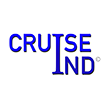Quick Facts:
- Founded: 1988
- Founder: Gianluigi Aponte
- Headquarters: Geneva, Switzerland
- Parent Company: Mediterranean Shipping Company (MSC Group)
- Fleet Size: 22 ships (as of 2025)
- Flagship Class: World-class
- Market Segment: Contemporary / International
MSC Cruises has grown from a regional European operator into one of the largest cruise lines in the world, combining Mediterranean heritage with an expanding global footprint. Founded in 1988 as part of the Mediterranean Shipping Company (MSC), the line began with modest tonnage before launching a newbuild program that would transform it into a major international player.

Today, MSC Cruises operates a fleet of more than 20 ships and continues to grow rapidly through an ambitious expansion plan. As the largest privately owned cruise line, MSC maintains full family ownership under the Aponte family, giving it a level of independence and strategic flexibility rarely seen among its competitors.
Onboard Experience

MSC Cruises blends European style with international accessibility. Onboard, guests experience a cosmopolitan mix of dining, design, and entertainment that reflects the line’s Mediterranean roots while catering to a global audience.
Dining is a centerpiece of the experience. MSC partners with world-class chefs such as Ramón Freixa, Harald Wohlfahrt, and Roy Yamaguchi to create signature specialty venues alongside traditional main dining options. The brand’s culinary approach leans toward fresh ingredients and regional flavor, with Italian favorites remaining a constant across the fleet.

Entertainment ranges from large-scale theater productions and live music to exclusive partnerships with LEGO, Formula 1®, and Chicco, which enhance the family offering. The MSC Aurea Spa provides a wellness-focused escape, while MSC Yacht Club, the line’s ship-within-a-ship luxury enclave offers private lounges, butler service, and an elevated level of exclusivity for premium guests.
Across newer ships like MSC World Europa and MSC Euribia, sustainability and technology have become key talking points. Both vessels are powered by liquefied natural gas (LNG) and feature advanced wastewater and energy systems. The line has also rolled out its MSC for Me app, integrating digital convenience into the onboard experience.
Operations and Deploymen
MSC Cruises operates globally, with a particularly strong presence in Europe, South America, and the Caribbean. Its year-round Mediterranean operations remain its foundation, while newer North American homeports in Miami, Port Canaveral, and New York City have helped solidify its presence in the U.S. market.

Private destinations like Ocean Cay MSC Marine Reserve in the Bahamas highlight MSC’s investment in sustainable tourism. The island serves as both a guest destination and a marine habitat restoration project, reinforcing the company’s long-term environmental goals.
Fleet expansion remains central to MSC’s growth strategy. The company continues to roll out ships across the Seaside, Meraviglia, and World-classes. Each designed to appeal to different markets and passenger preferences.
Future Outlook
MSC Cruises is entering a pivotal stage in its evolution. The ongoing delivery of LNG-powered vessels and the debut of MSC World America mark the brand’s most aggressive expansion into the North American market to date. Meanwhile, its luxury offshoot, Explora Journeys, broadens the company’s reach into the upper-premium segment, offering a boutique experience under the same corporate umbrella.

With a focus on sustainability, global deployment, and European flair, MSC Cruises is positioning itself as a long-term rival to the industry’s biggest names — and the only major player with deep roots outside the U.S. corporate ecosystem.


